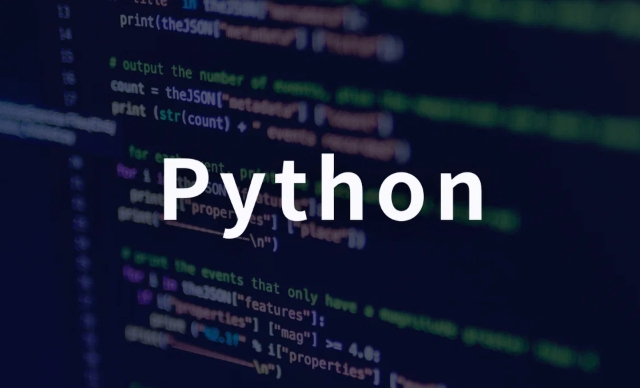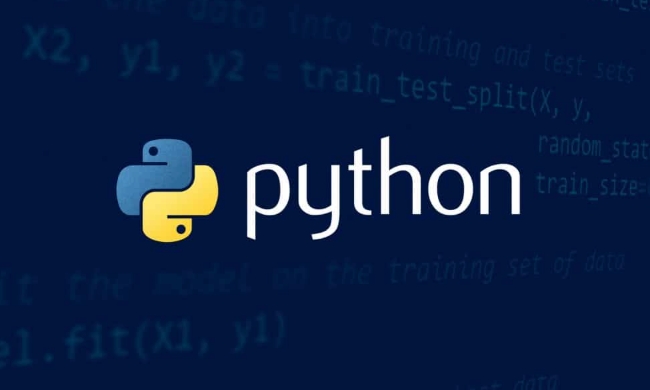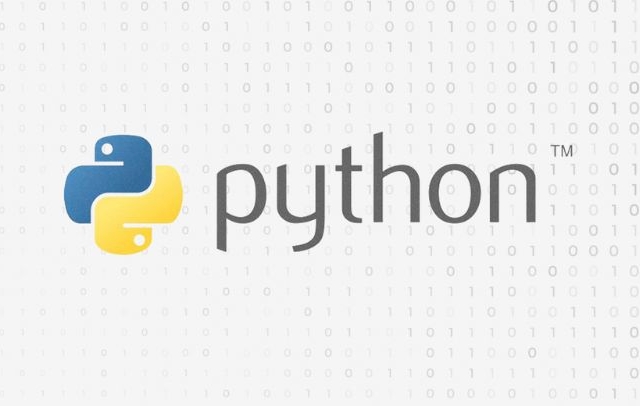What is the difference between python `is` and `==`?
Jul 12, 2025 am 02:08 AMIn Python, == compares values while 'is' checks memory identity. 1. == evaluates if two objects have equal values, like a == b for lists with same elements. 2. 'is' determines if two variables reference the exact same object in memory, which is why a is b returns False for separate lists. 3. Use == for value comparisons and 'is' only for checking None or confirming identical object references. 4. Be cautious as small integers and strings may be interned, causing unexpected 'is' results, but this behavior is implementation-dependent and unreliable for general use.

The difference between is and == in Python is pretty straightforward once you understand what each one actually checks. In short:

-
==compares the values of two objects. -
iscompares the identities (memory addresses) of two objects.
So even if two variables have the same value, they might not be the same object in memory — which means == could return True while is returns False.
How == Works – Value Comparison
When you use ==, Python checks whether the values of the two operands are equal. This can sometimes involve a lot of behind-the-scenes logic depending on the type of object, especially for custom classes that override equality behavior.

Examples:
a = [1, 2, 3] b = [1, 2, 3] print(a == b) # True – same values
Even though a and b are separate lists, their contents are identical, so == returns True.

Another example:
x = "hello" y = "hello" print(x == y) # True – both strings have the same characters
This works because immutable types like strings and small integers are often cached or interned by Python, which can affect how is behaves — more on that next.
How is Works – Identity Comparison
The is operator doesn't care about the values — it only checks whether two variables refer to the exact same object in memory.
Using the same list example:
a = [1, 2, 3] b = [1, 2, 3] print(a is b) # False – different objects in memory
But if you assign b = a, then they point to the same object:
a = [1, 2, 3] b = a print(a is b) # True – same object
Now any changes made through a will also appear in b, since they reference the same list.
When Should You Use Each?
Use these rules of thumb:
- Use
==when comparing values. That’s almost always what you want. - Use
isonly when checking againstNone, or when you really need to confirm two names point to the same object.
Examples where is makes sense:
value = None
if value is None:
print("Value is missing")Avoid doing this:
x = 5
if x is 5: # Not reliable!
print("Yes")Because for integers and other types, interning may or may not happen — it's implementation-dependent.
Also avoid comparing strings with is:
s = "hello"
if s is "hello": # Don't rely on this
passAgain, string interning varies and shouldn't be trusted unless you're certain.
Some Gotchas to Watch For
Here are a few common surprises people run into:
Small integers are interned:
a = 256 b = 256 print(a is b) # True
But bigger numbers aren’t:
a = 257 b = 257 print(a is b) # False
Strings with special characters or longer ones may not be interned either.
Lists, dicts, and sets are never interned:
a = {} b = {} print(a is b) # FalseThese behaviors show why relying on
isfor general comparisons is risky.
So yeah, basically
==checks if things are alike in value, andischecks if they’re literally the same thing in memory. Most of the time, you’ll stick with==.The above is the detailed content of What is the difference between python `is` and `==`?. For more information, please follow other related articles on the PHP Chinese website!

Hot AI Tools

Undress AI Tool
Undress images for free

Undresser.AI Undress
AI-powered app for creating realistic nude photos

AI Clothes Remover
Online AI tool for removing clothes from photos.

Clothoff.io
AI clothes remover

Video Face Swap
Swap faces in any video effortlessly with our completely free AI face swap tool!

Hot Article

Hot Tools

Notepad++7.3.1
Easy-to-use and free code editor

SublimeText3 Chinese version
Chinese version, very easy to use

Zend Studio 13.0.1
Powerful PHP integrated development environment

Dreamweaver CS6
Visual web development tools

SublimeText3 Mac version
God-level code editing software (SublimeText3)

Hot Topics
 Polymorphism in python classes
Jul 05, 2025 am 02:58 AM
Polymorphism in python classes
Jul 05, 2025 am 02:58 AM
Polymorphism is a core concept in Python object-oriented programming, referring to "one interface, multiple implementations", allowing for unified processing of different types of objects. 1. Polymorphism is implemented through method rewriting. Subclasses can redefine parent class methods. For example, the spoke() method of Animal class has different implementations in Dog and Cat subclasses. 2. The practical uses of polymorphism include simplifying the code structure and enhancing scalability, such as calling the draw() method uniformly in the graphical drawing program, or handling the common behavior of different characters in game development. 3. Python implementation polymorphism needs to satisfy: the parent class defines a method, and the child class overrides the method, but does not require inheritance of the same parent class. As long as the object implements the same method, this is called the "duck type". 4. Things to note include the maintenance
 Explain Python generators and iterators.
Jul 05, 2025 am 02:55 AM
Explain Python generators and iterators.
Jul 05, 2025 am 02:55 AM
Iterators are objects that implement __iter__() and __next__() methods. The generator is a simplified version of iterators, which automatically implement these methods through the yield keyword. 1. The iterator returns an element every time he calls next() and throws a StopIteration exception when there are no more elements. 2. The generator uses function definition to generate data on demand, saving memory and supporting infinite sequences. 3. Use iterators when processing existing sets, use a generator when dynamically generating big data or lazy evaluation, such as loading line by line when reading large files. Note: Iterable objects such as lists are not iterators. They need to be recreated after the iterator reaches its end, and the generator can only traverse it once.
 How to iterate over two lists at once Python
Jul 09, 2025 am 01:13 AM
How to iterate over two lists at once Python
Jul 09, 2025 am 01:13 AM
A common method to traverse two lists simultaneously in Python is to use the zip() function, which will pair multiple lists in order and be the shortest; if the list length is inconsistent, you can use itertools.zip_longest() to be the longest and fill in the missing values; combined with enumerate(), you can get the index at the same time. 1.zip() is concise and practical, suitable for paired data iteration; 2.zip_longest() can fill in the default value when dealing with inconsistent lengths; 3.enumerate(zip()) can obtain indexes during traversal, meeting the needs of a variety of complex scenarios.
 Explain Python assertions.
Jul 07, 2025 am 12:14 AM
Explain Python assertions.
Jul 07, 2025 am 12:14 AM
Assert is an assertion tool used in Python for debugging, and throws an AssertionError when the condition is not met. Its syntax is assert condition plus optional error information, which is suitable for internal logic verification such as parameter checking, status confirmation, etc., but cannot be used for security or user input checking, and should be used in conjunction with clear prompt information. It is only available for auxiliary debugging in the development stage rather than substituting exception handling.
 What are Python type hints?
Jul 07, 2025 am 02:55 AM
What are Python type hints?
Jul 07, 2025 am 02:55 AM
TypehintsinPythonsolvetheproblemofambiguityandpotentialbugsindynamicallytypedcodebyallowingdeveloperstospecifyexpectedtypes.Theyenhancereadability,enableearlybugdetection,andimprovetoolingsupport.Typehintsareaddedusingacolon(:)forvariablesandparamete
 What are python iterators?
Jul 08, 2025 am 02:56 AM
What are python iterators?
Jul 08, 2025 am 02:56 AM
InPython,iteratorsareobjectsthatallowloopingthroughcollectionsbyimplementing__iter__()and__next__().1)Iteratorsworkviatheiteratorprotocol,using__iter__()toreturntheiteratorand__next__()toretrievethenextitemuntilStopIterationisraised.2)Aniterable(like
 How to make an object a generator in Python?
Jul 07, 2025 am 02:53 AM
How to make an object a generator in Python?
Jul 07, 2025 am 02:53 AM
To make an object a generator, you need to generate values ??on demand by defining a function containing yield, implementing iterable classes that implement \_\_iter\_ and \_next\_ methods, or using generator expressions. 1. Define a function containing yield, return the generator object when called and generate values ??successively; 2. Implement the \_\_iter\_\_ and \_\_next\_\_\_ in a custom class to control iterative logic; 3. Use generator expressions to quickly create a lightweight generator, suitable for simple transformations or filtering. These methods avoid loading all data into memory, thereby improving memory efficiency.
 How to call Python from C ?
Jul 08, 2025 am 12:40 AM
How to call Python from C ?
Jul 08, 2025 am 12:40 AM
To call Python code in C, you must first initialize the interpreter, and then you can achieve interaction by executing strings, files, or calling specific functions. 1. Initialize the interpreter with Py_Initialize() and close it with Py_Finalize(); 2. Execute string code or PyRun_SimpleFile with PyRun_SimpleFile; 3. Import modules through PyImport_ImportModule, get the function through PyObject_GetAttrString, construct parameters of Py_BuildValue, call the function and process return






